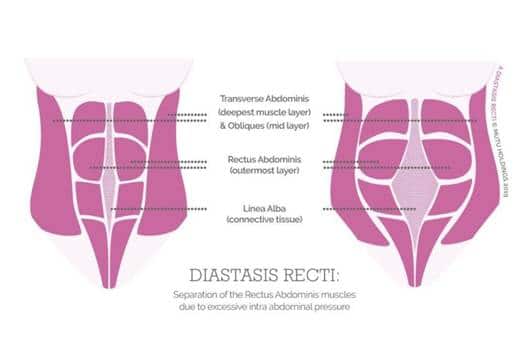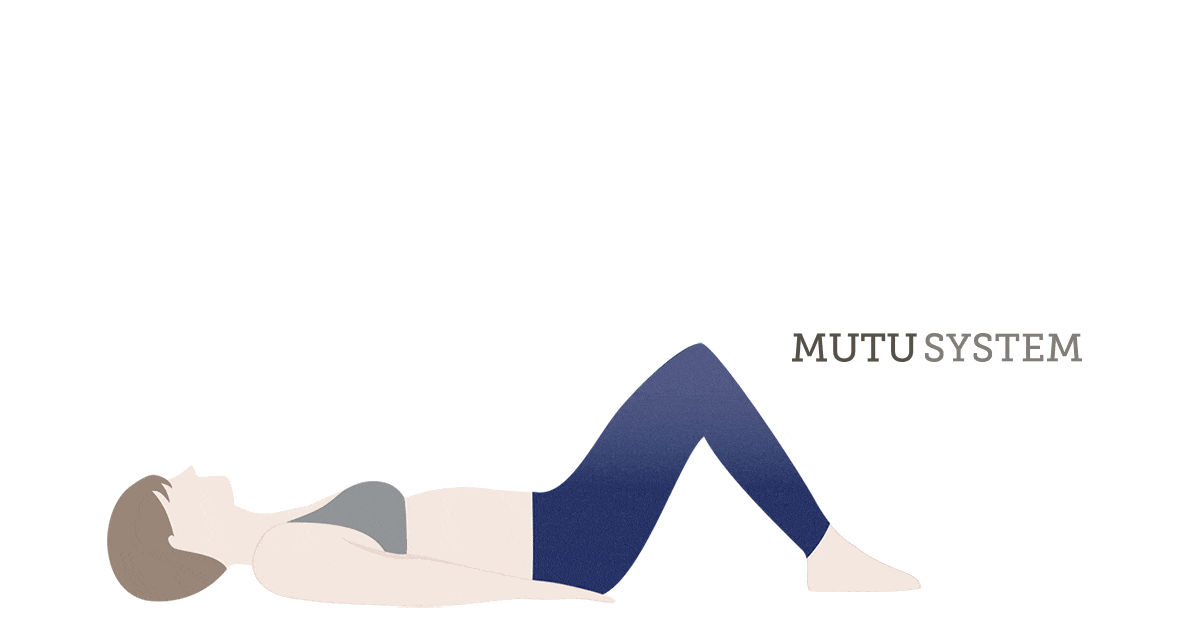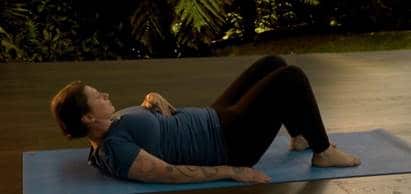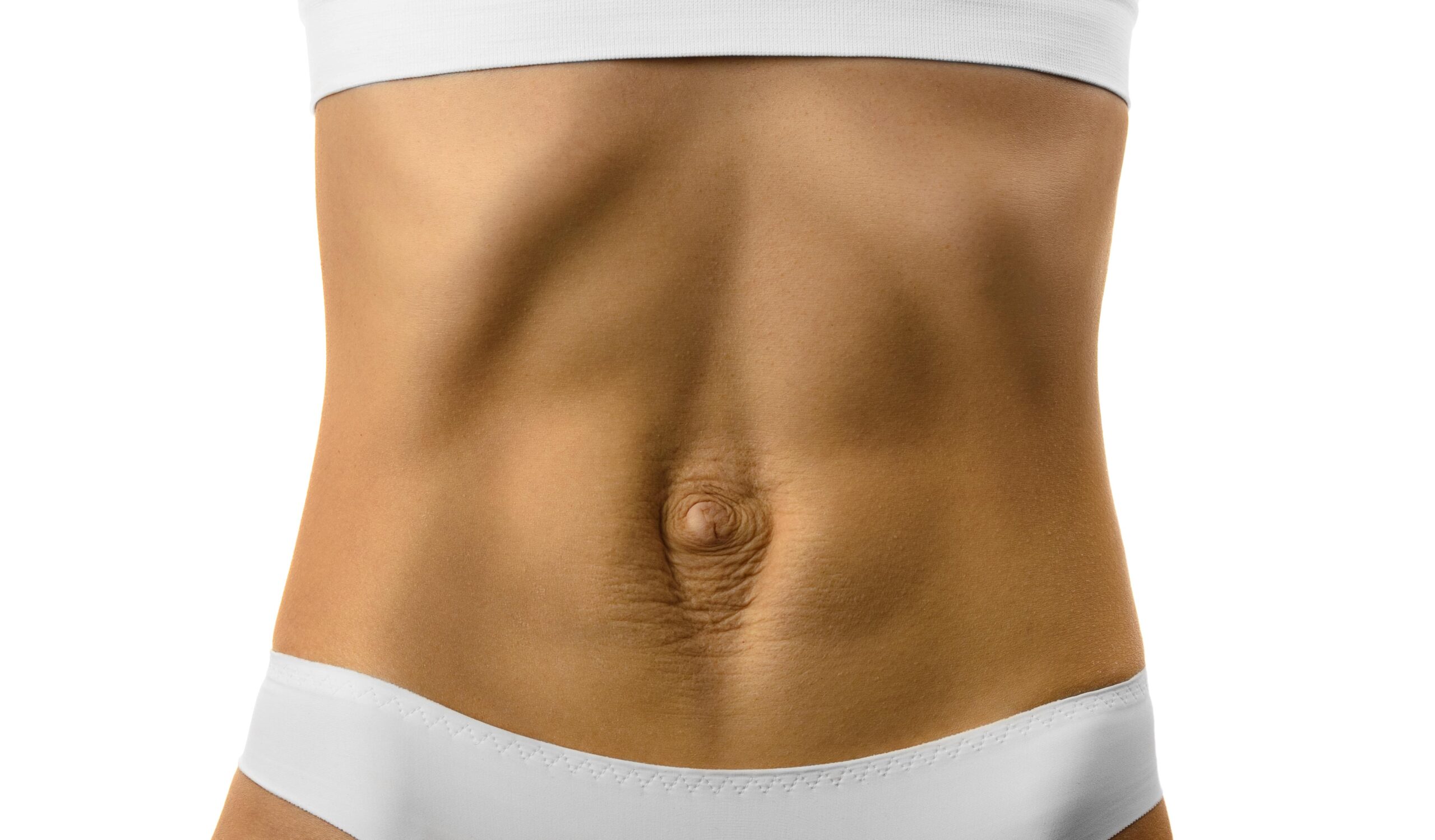Diastasis recti, often affectionately known as the ‘mummy tummy,’ is a prevailing condition marked by the gentle parting of the two sides of the Rectus Abdominis muscle.
This intriguing occurrence takes place precisely at the Linea Alba, a vital collagen structure of connective tissue positioned at the forefront of the abdomen.
In simpler terms, it’s the underlying reason why certain women might still carry the appearance of being a few months pregnant, even in the aftermath of childbirth.
It’s reassuring to understand that this journey is far from solitary. Remarkably, studies suggest that during the third trimester of pregnancy, approximately 100% of women experience some degree of diastasis of the rectus abdominis.
What’s equally noteworthy is that for many, this division endures beyond the immediate postpartum period—remaining notably noticeable even after 8 weeks and, astonishingly, potentially persisting without significant change up to a year after giving birth.
Interestingly, diastasis recti frequently finds companionship with pelvic floor concerns. The Linea Alba, a pivotal convergence point for all core muscles, loses its customary tautness and stability, leaving not just the Rectus Abdominis, but also the Transversalis, internal and external obliques in a state of compromise.
This lack of safeguarding and steadiness resonates throughout the body, exerting an impact that spans both the aesthetic and functional aspects of well-being.
What’s perhaps most intriguing is the intricate correlation—66% of women grappling with diastasis recti encounter varying degrees of pelvic floor dysfunction. This intricate interplay can lead to a noticeable depletion of vigor and stability across the expansive canvas of the pelvic region and midsection.
Yet, amid this intricate interplay of muscle and tissue lies a beacon of hope—diastasis recti exercises. These exercises hold the transformative potential to reinstate robustness and stability to the pelvic region and midsection, offering a path towards renewed vitality and well-being.

What does a diastasis look like?
Your body may still have that “pregnant look” around your tummy area in the weeks, month and even years after having your baby.
You may see a ‘pooching’ or ‘doming’ of your stomach, especially when coming up from a lying position on your back. It often worsens when you apply pressure to it such as by performing crunch type movements.

What are the causes of diastasis recti?
Diastasis Recti is the result of excessive abdominal pressure or loading. It is common, and normal, in the later stages of pregnancy – particularly second or subsequent pregnancies.
The increased load and all the changes of pregnancy effectively stretch the entire abdominal structure and when the two parts of the muscle separate or come apart, the connective mid-line is stretched and weakened as it takes all other muscular and fascial support structures along with it.
This can mean the abdomen is unsupported or unstable. This seam of connective tissue is designed to be taut, at full length and aligned in a vertical (breastbone to pubic bone) plane. But it cannot perform or function optimally when alignment is ‘out’. So alignment is important when discussing diastasis.
This is the same issue that creates other pelvic and abdominal problems including hernia and prolapse.
DR should therefore be treated as part of an integrated program designed to re-align, re-connect and then strengthen the entire core musculature, rather than be addressed in isolation.
How do I know if I have Diastasis Recti?

Finding and connecting with your core and pelvic floor
Step 1: Lie on your back with your knees bent and your feet flat on the floor.
Relax your head and shoulders and place your fingers (palm facing you) just above your belly button.
Step 2: Lift your head and neck very slightly off the floor and press down with your fingertips. If you feel a gap, that’s the diastasis. You will feel the muscles close in around your fingers as you lift your head and neck.
GENTLY draw your belly button back towards your spine as you slowly exhale by keeping your chest and shoulders relaxed.
Step 3: Make sure you are not forcefully sucking yourself in, but instead subtly drawing in your lower abdominal area.
Your shoulders, chest and pelvis should not move as this will disrupt the engagement with your core.
❌ Don’t tuck your pelvis under as you do this
❌ Don’t hold your breath
Correcting your alignment
Following the below simple steps can help you to tweak and adjust your alignment over time and reduce the impact of uncontained pressure and loading.
Step 1: Walk more, this can be done around your home or out and about, while wearing minimal shoes.
Step 2: Try and sit less and stand up more, changing how you move will help straighten you up and allow the tissues in your body to heal and repair.
Step 3: Get out of heeled shoes – this will for as much natural movement of the foot.
Next you must learn to engage and release your core and pelvic floor effectively in everyday movements. You want to be able to carry your baby, push your pram, lift your children, do housework, walk, and move with a strong and functional core. MUTU retrains, reconnects and strengthens your core.
You won’t always have to engage and release your core consciously but this is where we start.
Then you strengthen your transverse abdominis muscle to help draw your rectus abdominis muscle back in together, helping your tummy to feel stronger and look flatter.
Exercises to avoid with diastasis recti.
❌. Crunches – Many of these techniques could make a weak pelvic floor even worse as you have to hold your breath or suck in, which causes the stomach to bulge out!
❌. Sit-ups – These can put strain on the middle of abdominals where the muscles have separated and will only make that dome shape worse.
❌. Twists – Twists can apply more stress to the fascia and ultimately decrease the chances of healing your diastasis
❌ Straight leg lifts or holds whilst lying on your back – It is very difficult to safely lift both legs off the floor from a lying down position without bulging the abs and arching the back. As a result, this can cause the abdominal separation to worsen and even potentially affect your spine.
About MUTU System
With over 68,000 clients in more than 150 countries, previously including Kate Middleton and P!NK, MUTU System is a 12 module digital course referred to by specialist Pelvic Health Physical Therapists, Surgeons, NHS GP surgeries in the UK, Midwives and Hospital Women’s Health Physiotherapists with proven results to remedy postpartum symptoms such as urinary incontinence, pelvic organ prolapse, diastasis recti and painful sex.
MUTU System specialise in exercises helping mothers of all ages to rebuild their core and pelvic floor muscles. The programme was recently assessed and approved by NHS Digital to be included in their official apps library.





